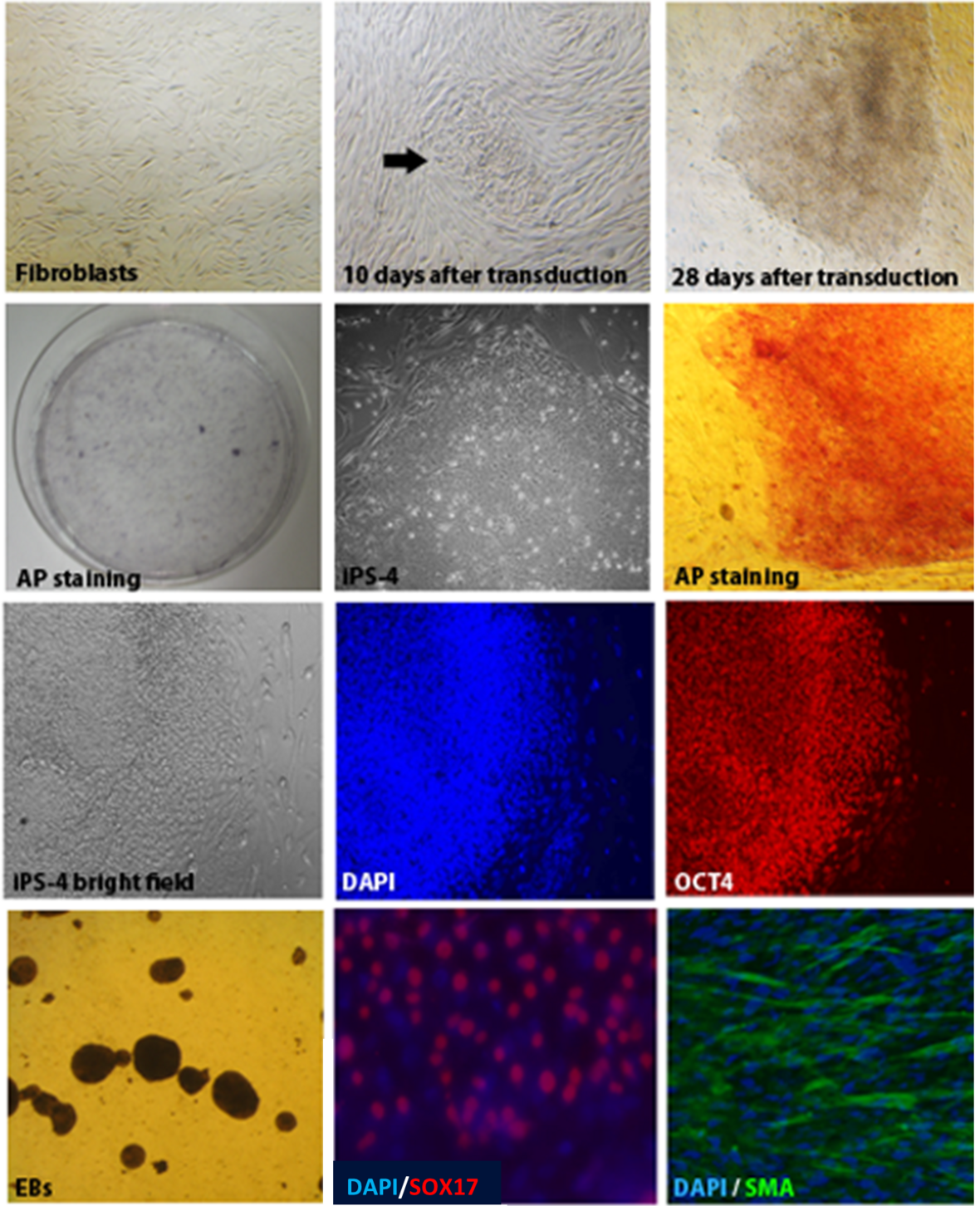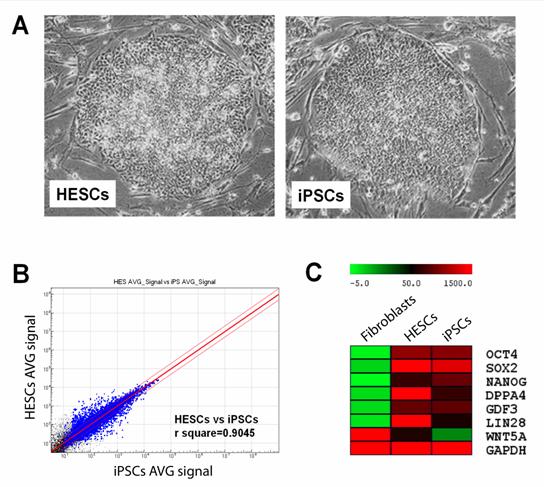Current state of research
Current iPS-based projects
In keeping with the new era of personalized medicine, we now derive (employing viral, episomal plasmids, nuclear protein extracts from pluripotent cells and drug-induced) and characterise iPS cells from various cell types (fibroblasts, keratinocytes, amniotic fluid, hair follicle stem cells and mesenchymal stem cells) of distinct ages and disease states (Figure 1).

Figure 1: An illustration of the iPS based projects under investigation
Successful reprogrammed somatic fibroblasts into induced pluripotent iPS cells are illustrated in Figure 2.

Figure 2: Derivation and characterization of iPS cells derived from human fibroblasts
A viral-derived (OCT4, SOX2, KLF4 and c-MYC) iPS cell line, stained positive for the pluripotency markers OCT4 and alkaline phosphatase. Embryoid body (EB) formation is shown together with the expression of the endoderm marker SOX17 and the mesoderm marker smooth muscle actin (SMA). A full characterization has been carried out but not shown here. (Prigione et al., 2009). iPS cells express telomerase activity, pluripotency-associated cell surface antigens and genes specific to human ES cells (Figure 3). Furthermore,we have successfully generated and characterised iPS cells from human skin-derived fibroblast and amniotic fluid cells and comparatively differentiated these into hepatocyte-like cells.These studies are intended to increase our meagre understanding of the mechanisms underlying cellular reprogramming. iPS cells generated from individuals afflicted by diseases such as Alzheimer’s, Type 1 Diabetes, Nijmegen Breakage Syndrome and Steatosis provide in vitro models for studying the mechanisms underlying these diseases. These studies are carried out in collaboration with relevant Clinicians.

Figure 3: hESCs and hiPSs share similarities in their morphologies and transcriptomes
A) Phase contrast images of ESCs and fetal foreskin fibroblast-derived iPSCs showing similarities in cell morphologies. B) The transcriptomes are 90% identical based on whole genome microarray-based gene expression analysis.C)Transcription of self-renewal and pluripotency associated genes are activated upon cellular reprogramming.
Reference:
The senescence-related mitochondrial/oxidative stress pathway is repressed in human induced pluripotent stem cells.
Prigione A, Fauler B, Lurz R, Lehrach H, Adjaye J.
Stem Cells. 2010 Apr;28(4):721-33. PMID: 20201066 PubMed




